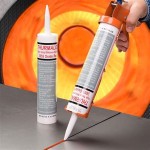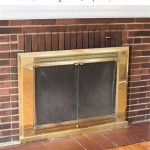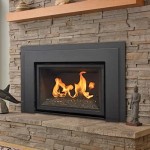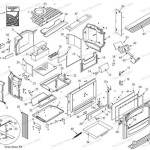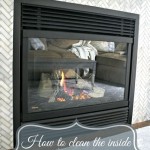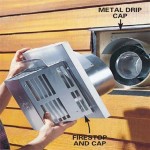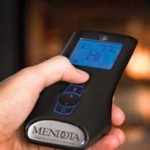```html
Two-Sided Fireplace: Blurring the Lines Between Indoor and Outdoor Living
A two-sided fireplace, also known as a see-through or double-sided fireplace, is a design element that offers a unique blend of functionality and aesthetic appeal. Unlike traditional fireplaces that are confined to a single room, a two-sided fireplace is designed to be viewed from two separate spaces simultaneously. This architectural feature creates a visual connection between rooms, often bridging the gap between an indoor living area and an outdoor patio or deck. The appeal of a two-sided fireplace lies in its ability to enhance both the ambiance and the value of a property by offering a shared focal point and efficient heating across multiple zones.
The construction of a two-sided fireplace requires careful planning and execution, considering structural integrity, ventilation, and safety regulations. These fireplaces are typically integrated into the initial building design or undergo significant renovation to accommodate the necessary support structures and flue systems. The design options are diverse, ranging from modern linear models with sleek glass enclosures to traditional brick or stone fireplaces that evoke a sense of rustic charm. Ultimately, the choice of design depends on the architectural style of the home and the desired aesthetic effect.
The functionality of a two-sided fireplace extends beyond mere aesthetics. It provides a practical heating solution for multiple spaces, allowing homeowners to enjoy the warmth and comfort of a fire in both indoor and outdoor environments. This is particularly advantageous in climates with fluctuating temperatures, where the fireplace can serve as a primary or supplemental heat source. Moreover, the visual appeal of the fire can contribute to a sense of relaxation and well-being, creating a cozy and inviting atmosphere in both living spaces.
Key Point 1: Architectural Integration and Design Considerations
Integrating a two-sided fireplace into a home requires a comprehensive understanding of architectural principles and building codes. The placement of the fireplace is paramount, as it directly impacts the flow of traffic and the visual connection between the two spaces it serves. Common placement locations include dividing walls between living rooms and dining rooms, or walls separating indoor family areas from covered patios. The structural integrity of the supporting wall must be assessed to ensure it can bear the weight of the fireplace and its surrounding materials. This often involves reinforcing the existing structure or incorporating additional support beams.
Ventilation is another critical aspect of the design process. A properly designed flue system is essential for safely removing combustion byproducts and preventing smoke from entering the living spaces. The height and diameter of the chimney must comply with local building codes and manufacturer specifications. In addition, the design should account for prevailing winds and potential downdrafts that can affect the fireplace's performance. Different fuel types, such as wood, gas, or propane, necessitate varying ventilation requirements. Gas fireplaces, for example, may require specialized venting systems that differ from those used for wood-burning fireplaces.
The aesthetic design of the two-sided fireplace should complement the overall architectural style of the home. Materials such as brick, stone, concrete, and metal can be used to create a variety of looks, from traditional to contemporary. The design should also consider the visual impact on both sides of the fireplace. A cohesive design that seamlessly integrates with both the indoor and outdoor environments is essential for creating a harmonious and visually appealing space. Furthermore, safety features such as glass enclosures, spark screens, and heat shields must be incorporated to protect occupants and prevent accidental fires.
Key Point 2: Heating Efficiency and Fuel Options
The heating efficiency of a two-sided fireplace is influenced by various factors, including the type of fuel used, the design of the firebox, and the insulation of the surrounding structure. Wood-burning fireplaces, while offering a classic ambiance, tend to be less efficient than gas or propane fireplaces due to the inherent inefficiencies of wood combustion. A significant portion of the heat generated by a wood-burning fireplace is lost up the chimney, resulting in lower overall heating efficiency. However, advancements in wood-burning fireplace technology, such as airtight fireboxes and catalytic converters, have improved their efficiency to some extent.
Gas and propane fireplaces offer greater control over heat output and burn more cleanly than wood. These fireplaces typically feature adjustable flame settings, allowing homeowners to regulate the amount of heat produced. They also require less maintenance than wood-burning fireplaces, as there is no need to store and dispose of wood. Gas and propane fireplaces can be either vented or ventless, depending on the specific model and local building codes. Vented gas fireplaces require a flue to exhaust combustion byproducts, while ventless models use catalytic converters to reduce emissions and can be installed without a chimney.
The choice of fuel ultimately depends on individual preferences, budgetary considerations, and local regulations. Wood-burning fireplaces offer a traditional aesthetic and the aroma of burning wood, but they require more effort to operate and maintain. Gas and propane fireplaces provide convenience, efficiency, and cleaner burning characteristics. Electric fireplaces are another option, offering ease of installation and operation without the need for venting. However, electric fireplaces primarily provide visual ambiance and may not be as effective at heating large spaces.
Key Point 3: Safety Regulations and Maintenance Requirements
Safety is paramount when installing and operating a two-sided fireplace. Compliance with local building codes and manufacturer specifications is essential to ensure the safe and efficient operation of the fireplace. Building codes typically address aspects such as chimney height, flue size, firebox construction, and clearance to combustible materials. Permits are often required for the installation of a fireplace, and inspections may be conducted to verify compliance with code requirements.
Regular maintenance is crucial for maintaining the safety and efficiency of a two-sided fireplace. For wood-burning fireplaces, this includes cleaning the chimney at least once a year to remove creosote buildup. Creosote is a highly flammable substance that can accumulate in the chimney and pose a significant fire hazard. Gas and propane fireplaces require periodic inspection and cleaning of the burner assembly, pilot light, and venting system. It is recommended to have a qualified technician inspect and service gas fireplaces annually to ensure they are operating safely and efficiently.
Regardless of the fuel type, it is important to install and maintain carbon monoxide detectors in the home to detect the presence of this odorless and colorless gas. Carbon monoxide is a byproduct of incomplete combustion and can be fatal if inhaled in high concentrations. Regular testing of carbon monoxide detectors is essential to ensure they are functioning properly. Furthermore, it is important to educate all household members about fireplace safety and proper operation, including the safe handling of fuel, the importance of maintaining adequate ventilation, and the proper use of fire extinguishers.
The benefits of a two-sided fireplace extend beyond its aesthetic appeal. It creates a seamless transition between indoor and outdoor living spaces, allows for efficient heating of multiple areas, and enhances the overall value of a property. However, the installation and maintenance of a two-sided fireplace require careful planning, attention to detail, and adherence to safety regulations. By addressing these considerations, homeowners can enjoy the warmth, ambiance, and functionality of a two-sided fireplace for years to come.
Careful material selection is crucial in the construction of a two-sided fireplace used in both indoor and outdoor settings. The outdoor section will be exposed to the elements, including rain, snow, and extreme temperature changes. Therefore, materials must be weather-resistant, durable, and able to withstand the rigors of outdoor exposure. Stone, brick, and specially treated concrete are often used for the exterior portion of the fireplace. These materials offer both aesthetic appeal and long-lasting performance in outdoor environments.
The indoor section of the fireplace can incorporate a wider range of materials, allowing for greater design flexibility. Options include ceramic tile, metal accents, and various types of stonework. The key is to select materials that complement the overall interior design of the room while maintaining a cohesive aesthetic with the outdoor section of the fireplace. Careful consideration should also be given to the heat resistance of the materials, particularly those in close proximity to the firebox.
```
Double Sided Indoor Outdoor Fireplace Heat Glo

23 Luxurious Double Sided Fireplaces Fireplace Photos

Indoor And Out No Limitations With Davinci Lopi

Benefits Of Installing An Indoor Outdoor Fireplace Wyckoff

White Mountain Hearth Dvct40csp Out Rushmore Clean Face Direct Vent Double Sided Indoor Outdoor Fireplace With Log Set 40 Inches

Double Sided Indoor Outdoor Fireplace Heat Glo

42 Inviting Fireplace Designs For Your Backyard Indoor Outdoor Fireplaces Home Dream House

Double Sided Fireplaces Fireplace Modus

Make Double The Impact With A Sided Fire

Pin By Sonda Hanosh On Stuff To Do At The Cabin Indoor Outdoor Fireplaces Gas Fireplace Designs

